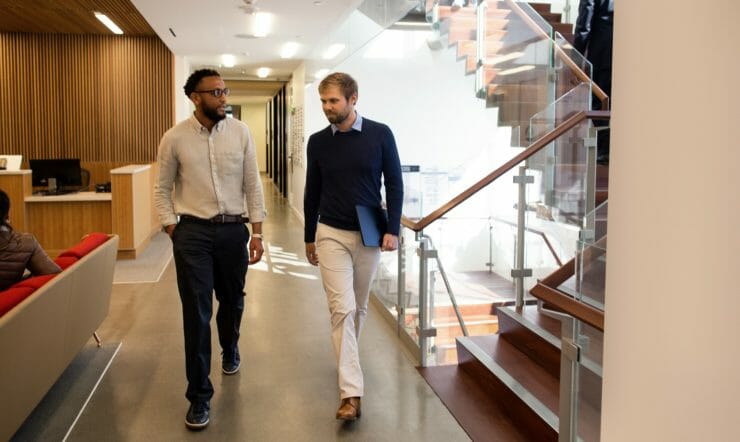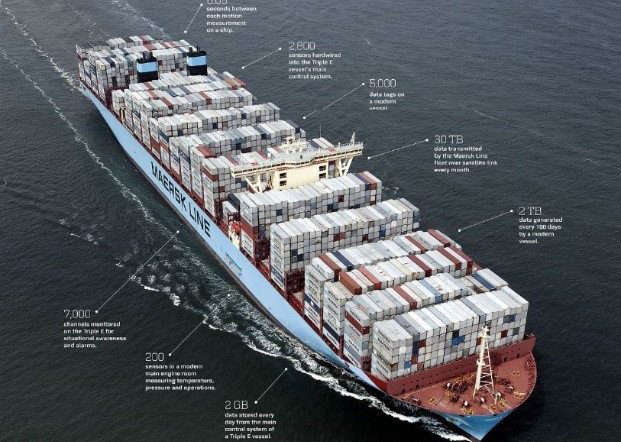One year ago, ChatGPT launched and became the fastest growing consumer app in history, with 100 million monthly active users exploring the power of artificial intelligence (AI).
This enthusiasm pushed AI into the mainstream of conversation in Europe, and also generated optimism in how we can apply AI to help us solve some of our most pressing economic, demographic, and societal challenges, plus threats from cybercrime. When I talk to leaders in all kinds of organizations, they understand this context, but also ask how we can realize wider and more impactful implementation to turn promises into progress.
A recent IDC study asked global C-Suites about their new investment priorities for the next 12 months. Nearly 70% in Europe mentioned Generative AI. Yet only half of respondents said they had already begun implementing Gen AI technologies at their organizations, with 35% claiming they’ve made a tentative start.
I wanted to share some of what I’ve learned to help you focus on where AI transformation could make a big difference, and some practical steps on how to get started.
Reinventing Customer Engagement
Customer acquisition and retention is a challenge we’re all familiar with and the struggle to keep pace with customer signals, and to deliver personalised service in real-time.
Telefonica, a multinational telco, wanted to create a personal, intelligent way for customers to manage their accounts, get real-time support, review billing information and more – all in several languages.
Using Microsoft AI technology, they quickly built Aura, an intelligent conversational virtual agent for customer care which could meet these needs.
After launching in six countries, Aura is now helping their customers manage products and services, get real-time support or just change the TV channel.
That’s a fantastic way to reinvent customer engagement and delight consumers, and drive customer loyalty.
Enriching Employee Experience
Employees in every industry are dealing with an increasing volume of digital signals and administrative burdens.
In our recent Work Trend Index, we found that AI is already removing the barriers to meaningful work and giving employees the space to think, collaborate and innovate.
An example in healthcare, is at the San Raffaele University and Research Hospital in Italy which cares for1.5 million people, annually.
In February 2020, the hospital admitted over 20,000 Covid patients. There was an immediate need to find fast, deployable solutions to triage patients and understand the disease.
Using Microsoft AI technologies, the team created a platform for data collection, collaboration, management, analysis and more. They also developed AI models which could answer clinical questions and organise research.
Patients were quickly triaged more effectively, and the hospital now has predictive models for diagnosis and treatment. This efficiency has enabled hospital and research staff to focus on the tasks that really matter.
Reshaping business process
The third theme I think about with AI transformation is reshaping business process.
Organisations of all kinds have pockets of valuable information scattered throughout their organisation that can be difficult for employees to locate and leverage. Industries such as finance have the added complications of high security and privacy standards.
Swift, based in Belgium, operates in this context and leads an association of 11,500 members. Together, they make reliable, and secure payments across the world.
A core challenge is fighting financial fraud, so the team needed to create a model which could accurately detect anomalies by learning from the data at Swift’s banking partners.
The team turned to Azure Machine Learning and Confidential Computing to train a model in a federated manner – and then used the solution to more accurately detect differing types of fraud.
Swift can now leverage insights and find new ways to fight fraud from across a network of 11,500 members, while retaining high levels of privacy and security.
Bending the curve on innovation
The final theme I think about when applying AI transformation is bending the curve on innovation.
Equinor is a Norwegian energy company who provides natural gas, petroleum and renewable energy across 36 countries.
Getting energy to where it needs to be, at the best price, is done by traders who factor in the logistics of production, transportation and the pricing of commodities on the market. Getting it wrong is very costly.
Traders used to rely on more gut-feeling than data, so Equinor built a model to help them make their activities more accurate.
Using Microsoft AI technologies , the team has radically increased the speed of development. Now AI models just take one day to deploy – as opposed to two weeks – to enable traders to predict market conditions, trends and respond in an agile, accurate and timely way.
Starting your AI transformation journey
So how do we best go about adopting AI and ensuring we maximize the business value we can derive from it? The IDC recommends six clear steps to success.
- Firstly, your organization should think about establishing an AI council. This should consist of senior executives, and its role is to use its collective experience to guide adoption.
- Next, your organization should develop responsible AI policies. How will you ensure data governance and practice AI responsibly?
- The third step is to spread knowledge and practical expertise of AI amongst all your employees through reskilling and upskilling.
- Careful budgeting is essential to your AI journey, so the next step is to ensure there are sufficient finances to fund your AI initiatives.
- Return of Investment (ROI) is essential to measure the success of your AI project, so step five is to collaborate with your trusted technology partners to accelerate AI adoption while optimizing costs throughout the AI lifecycle.
- Once those steps have been taken it’s time to get started by identifying AI projects which align with your business objective, and get the ball rolling and create tangible business impact.
Explore the approaches and strategies enterprise organizations worldwide are using to realize an average of 3.5X return on their AI investments: The Business Opportunity of AI
Next steps and events
Whatever business needs and ambitions you may have, the potential of AI is clear.
We’ve built AI capabilities into the Microsoft Cloud which can help everyone be more productive, creative, and innovative. There are tens of thousands of customers who are already using the Azure OpenAI service and more customers are adopting Microsoft Copilot day by day.
There’s a lot to be excited about for the future as we all embark on this wave of AI transformation. If you’d like to explore this topic further, make sure you watch the on-demand recording of the Microsoft Envision Connection Europe.



























